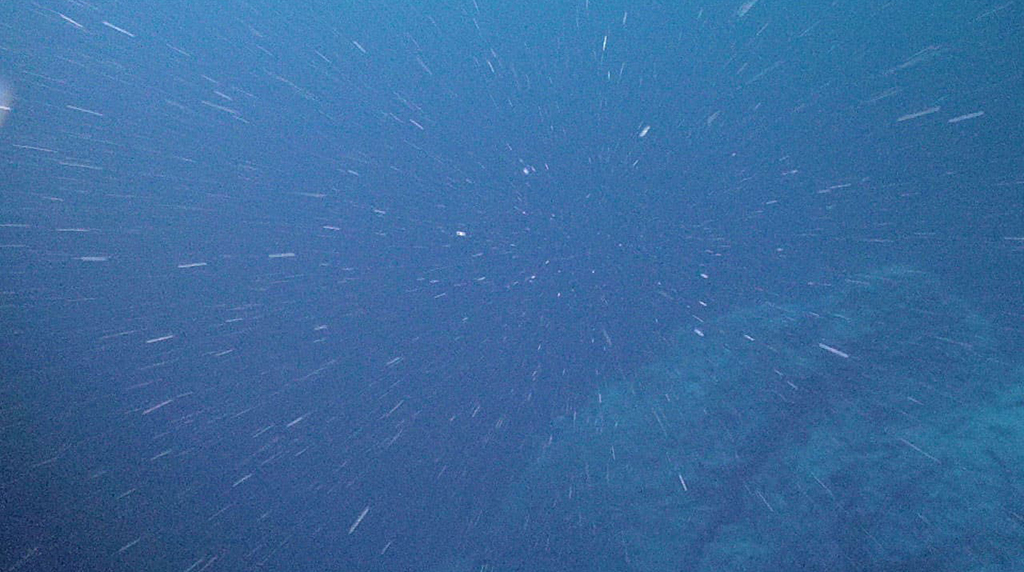December 11, 2019
During the 87 day oil spill that resulted from the Deepwater Horizon accident in 2010, a significant amount of that spilled oil was transported to the seafloor as marine oil snow. Marine snow is considered by researchers to be the "dust bunnies" of the sea - dead diatoms, zooplankton fecal pellets and other sticky particles that group together to form little conglomerates that sink to the deep sea, gathering more bits and pieces along the way. Marine oil snow forms when these sticky conglomerates also accumulate oil droplets that are floating in the water column, as was the case after the Deepwater Horizon accident. Marine oil snow is one of the primary ways oil can be transported from the water column to the seafloor, as generally oil floats since it is less dense than water.
A recent paper from ECOGIG researcher Dr. Uta Passow (Memorial University and University of Santa Barbara), published in Marine Chemistry, analyzed in detail the marine oil snow that fell right after the spill ended and up to a year afterwards. To collect the marine oil snow, sediment traps were deployed to measuring the sinking particles. The traps captured four unique pulses of particles to the seafloor. Each pulse contained oil, but over time, the amount of oil that made its way to the bottom decreased, suggesting that as time passed after the end of the spill, the oil in the water column had been diluted or degraded from the water before reaching the sediment trap.
A detailed analysis of the oil showed that it had never seen the sea surface - this means that the oil they found in the sediment traps came from the layer of oil that formed midwater after the spill. This oil continued to linger in the water column for almost a year after the spill, until most of it settled out or was otherwise degraded in the water column.
________________________________________________________________________________________________________
You can find the entire scientific paper online here.


















 back to top
back to top